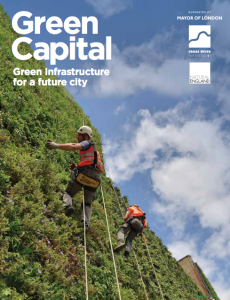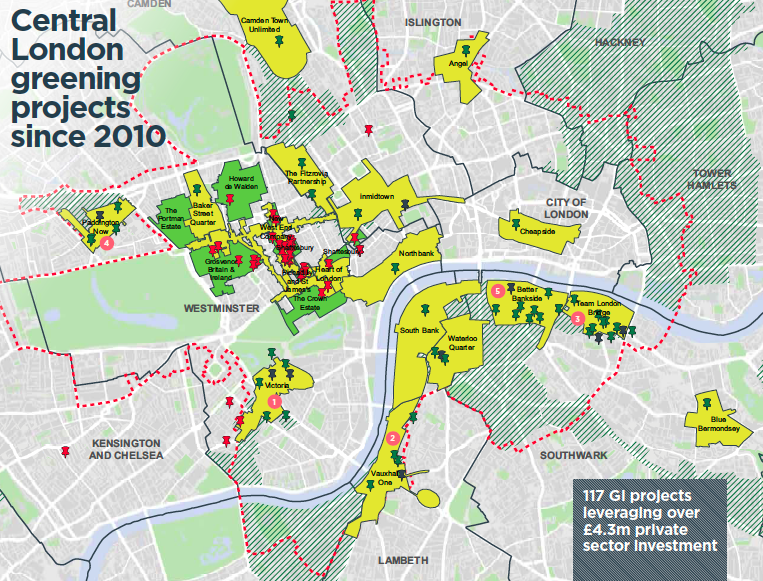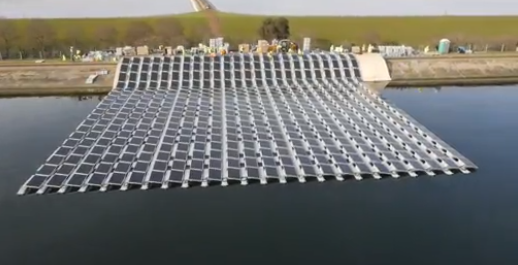Site search:
-
What’s new?
Energy for London Tags
Brent Buildings Camden Carbon Emissions CHP Cities Climate Adaptation Community Heating Community Initiatives Croydon Data DECC Decentralised Energy Distribution ECO Energy Costs Energy Efficiency Enfield FIT Fuel Poverty Funding Green Deal Hackney Haringey Housing Islington Lambeth Library Local Authorities Mayor Newham Ofgem Olympics Photovoltaics Planning RE:FIT RE:NEW Renewable Energy Retrofit Southwark Tower Hamlets Transport Waltham Forest Waste WestminsterEnergy Archives:
- February 2021 (1)
- January 2021 (15)
- December 2020 (15)
- November 2020 (9)
- October 2020 (3)
- August 2020 (5)
- July 2020 (3)
- June 2020 (4)
- April 2020 (10)
- March 2020 (5)
- February 2020 (2)
- January 2020 (3)
- October 2019 (1)
- September 2019 (4)
- August 2019 (2)
- July 2019 (1)
- August 2018 (1)
- November 2016 (8)
- October 2016 (8)
- September 2016 (2)
- August 2016 (8)
- July 2016 (14)
- April 2016 (12)
- March 2016 (16)
- February 2016 (8)
- January 2016 (4)
- December 2015 (1)
- November 2015 (1)
- October 2015 (16)
- September 2015 (3)
- June 2015 (1)
- May 2015 (1)
- April 2015 (1)
- March 2015 (1)
- February 2015 (1)
- January 2015 (1)
- December 2014 (18)
- November 2014 (4)
- August 2014 (8)
- July 2014 (7)
- June 2014 (25)
- May 2014 (8)
- April 2014 (4)
- March 2014 (12)
- February 2014 (7)
- January 2014 (13)
- December 2013 (11)
- November 2013 (15)
- October 2013 (15)
- September 2013 (18)
- August 2013 (5)
- July 2013 (20)
- June 2013 (33)
- May 2013 (8)
- April 2013 (16)
- March 2013 (25)
- February 2013 (14)
- January 2013 (20)
- December 2012 (23)
- November 2012 (23)
- October 2012 (25)
- September 2012 (14)
- July 2012 (12)
- June 2012 (43)
- May 2012 (20)
- April 2012 (8)
- March 2012 (40)
- February 2012 (39)
- January 2012 (40)
- December 2011 (22)
- November 2011 (40)
- October 2011 (33)
- September 2011 (48)
- August 2011 (40)
- July 2011 (58)
- June 2011 (41)
- May 2011 (80)
- April 2011 (38)
- March 2011 (33)
- February 2011 (25)
- January 2011 (24)
- December 2010 (3)
- November 2010 (7)
- October 2010 (6)
- September 2010 (7)
- August 2010 (1)
- July 2010 (2)
- June 2010 (4)
- May 2010 (1)
- March 2010 (3)
- February 2010 (3)
- December 2009 (5)
- November 2009 (2)
- October 2009 (3)
- July 2009 (3)
- June 2009 (1)
- April 2009 (1)
- March 2009 (1)
- February 2009 (1)
- January 2009 (1)
- December 2008 (2)
- October 2008 (1)
- September 2008 (1)
- July 2008 (1)
- March 2008 (2)
- January 2008 (2)
- October 2007 (1)
- September 2007 (3)
- July 2007 (1)
- March 2007 (1)
- February 2007 (3)
- November 2006 (3)
- August 2006 (1)
- February 2006 (1)
- May 2005 (1)
- February 2004 (1)
News
Nearly three quarters of Londoners want next Mayor to back solar
11 April 2016: Results of a Greenpeace poll published today – “A poll of 1007 people carried out by Mora consulting found that 73.2% of Londoners (and 70% of undecided voters) thought it was either very or quite important that the next mayor take steps to make London a leading city for solar power.” Read the full story on the results here.
This builds on a report published by Greenpeace UK – undertaken by Energy for London – on potential London solar initiatives for an incoming Mayor.
New London Housing SPG Published
April 2016: Somewhat hidden away on the GLA website (as most things are at the moment…) is a new supplementary planning guidance (SPG) on housing, published a few weeks ago. A detailed history on the lengthy consultation process behind this SPG and its relationship to the London Plan and other key GLA documents is helpfully set out at the designingbuildings wiki, which is worth checking.
The SPG includes a series of housing ‘Standards’ which stem from the policies contained in the London Plan’s Climate Change chapter, with the SPG providing further specific guidance on implementing these policies. Standard 35 is of particular importance, as it is concerned with the London’s Plan requirement for zero carbon development: this issue has had a long and complex history – with the SPG’s confirming that new housing development in London will need to be zero carbon from October 2016 is significant – which is covered in further detail in another post here.
The SPG also refers to action to mitigate ‘overheating’ in new homes in Standard 36 (linked to Policy 5.9 of the London Plan) stating that new “housing needs to be designed for the climate it will experience over its life, taking into account predicted climate change, the potential for summer heat waves, London’s urban heat island effect and the limits of thermal comfort of future residents”.
The GLA’s Preparing Energy Assessments guidance document has also been expanded and updated in line with these changes in the Housing SPG (with a new section 5 entitled ‘Implementation of zero carbon homes (from 1 October 2016)’ added) and is available to download here (or download from this website here).
Posted in Decentralised Energy, Energy Efficiency, News, Renewable Energy
Tagged Climate Adaptation, Housing, Planning
Leave a comment
Major London housing development to be zero carbon from October 2016
April 2016: As highlighted in an earlier post – the GLA have just issued new London Housing Supplementary Planning Guidance (SPG) and Energy Planning Guidance which sets out the carbon targets for new residential developments in the capital following the government’s announcement last year to scrap its zero carbon homes policy.
Full detail follows below – but a helpful summary is provided in the GLAs new Energy Assessment Planning Guidance (page 12) on the key takeaway – new carbon targets:
• Stage 1 schemes received by the Mayor up until 30 September 2016 – 35% below Part L 2013 for both residential and commercial development.
• Stage 1 schemes received by the Mayor on or after the 1st October 2016– Zero carbon (as defined in section 5.3 of this guidance) for residential development and 35% below Part L 2013 for commercial development
Over the past few months, the Mayor has referred to keeping London’s zero carbon homes policy through a number of responses to Mayoral Questions (see references below). This new Housing SPG is however the first official GLA document which confirms the process for how the zero carbon policy is to be implemented. The full text from the SPG on Zero Carbon Homes follows below – with some accompanying analysis:
Posted in Decentralised Energy, Energy Efficiency, Library, News, Renewable Energy
Tagged Housing, Islington, Planning, Retrofit, Westminster
Leave a comment
Mayoral manifestoes energy and climate proposals
April 2016: With the publication last week of the manifesto of the Liberal Democrat’s Caroline Pidgeon, all four major London Mayoral candidates have now set out their proposals in relation to energy and climate if they were to become Mayor. I’ve produced a summary of these proposals, across various categories of interest, in the following document.
The first thing to notice is the welcome inclusion of energy and climate proposals across all manifestoes: a wide number issues are addressed, but some common themes do emerge:
- The first – and most significant – pledge around energy to emerge from the manifestoes is that all four main candidates have set out their intention to establish a new London government based energy business. Zac Goldsmith references the work that Boris has taken forward over the past few years in advancing Licence Lite – but states he “will go further to set up ‘Energy for London – a new clean energy company'”. Sadiq Khan will establish ‘Energy for Londoners’ and both Caroline Pidgeon and Sian Berry state the will establish a new London energy company – Sian saying that this new business concern will be linked to Transport for London (the detail of which has been previously set out in a Jenny Jones commissioned report).
- N.B. There has been a previous attempt during Ken Livingstone’s tenure as Mayor to establish a municipal energy operation. The London Climate Change Agency (LCCA) (see wiki entry here) operated for a few years before made defunct as part of a restructure of the then London Development Agency.
- Worryingly, no candidate commits to working to achieve two long standing London climate targets: the 60 per cent 2025 carbon reduction target and the 25 per cent 2025 decentralised energy target.
- All candidates are keen on electric cars, with Zac Goldsmith pledging to introduce Paris’s Autolib electric car rental scheme to London – something Boris has talked about doing since 2009.
- There are warm words for support for developing community energy projects in London – with most detail set out in Zac Goldsmith’s manifesto.
- Sian Berry and Zac Goldsmith haven’t given up on the Green Deal model – both propose to investigate a London pay-as-you-save energy efficiency retrofit initiative. Caroline Pidgeon interestingly supports working with London councils to introduce a ‘consequential improvements’ policy – a proposal that Government scrapped back in 2012 – a decision which significantly contributed to the eventual demise of the Green Deal.
- All candidates support increasing the number of solar power installations in London with Caroline Pidgeon and Zac Goldsmith committing to specific targets – PV capacity equivalent to 200,000 homes/750MW/a 10 fold increase in solar – all of which amounts to around the same thing (see Greenpeace’s London solar report) which has contributed to candidates consideration on the future of solar in the capital.
All in all, it’s massively encouraging that energy concerns and their relevancy to the future of London have been recognised across all main manifestoes. Issues such as reducing the city’s contribution and response to climate change, increasing energy affordability, and accelerating the deployment of measures to enhance energy efficiency and decentralised energy are promoted by all candidates, which gives confidence that GLA programmes in place, such as RE:NEW, RE:FIT, DEPDU and others will continue to be supported by an incoming Mayor.
Some omissions from the manifestoes which it would have been good to have seen including advancing smarter energy initiatives (such as building on the work the GLA are doing with Tempus Energy and Kiwi Power), addressing potential energy security of supply issues in the capital (an issue previously raised by the Mayor and an area of GLA activity through the Mayor’s High Level Electricity Working Group), energy efficiency in the commercial building sector (a significant and difficult issue for Mayor, with next to no regulatory powers over existing buildings…), and how new sustainable energy activities going forward will be financed. However – despite these concerns – this has been a great start providing much to build upon!
Inside the UK’s first passive house in Camden
31 March 2016: Evening Standard property section article and video on a new bespoke passive house development in Camden – which states the house has an annual energy bill of just £100. Passive house experts, BERE Architects led on the build of the home – and their website has further details of projects across London including a community centre in Islington (and here); Exmouth Market; Brent; and Newington Green.
London Greens announce ‘red lines’ for Mayoral 2nd preference endorsement
March 2016: London Green Party members have thrown down the gauntlet to Zac Goldsmith and Sadiq Khan, as they lay out their four ‘red line’ policies either candidate must back before Greens officially give them their 2nd preference support for May 5th. Read the full report at the BrightGreen website here.
DSR project in Hillingdon
March 2016: EDIE reports that “Building materials supplier Hanson UK is pioneering a demand-side response approach to energy management, with the technology being rolled out to 29 of the company’s quarries across the country” including Hanson’s West Drayton Asphalt Plant in the London Borough of Hillingdon.
“The London-based firm, which employs around 3,500 people, has partnered with demand-response aggregator Open Energi to install the ‘Dynamic Demand’ system at 14 of its sites, with another 15 installations planned through a phased rollout.
“Using the demand side response technology, tanks and pumps used to dewater Hanson’s quarries will be able to reduce their energy consumption when UK energy demand exceeds supply, and increase consumption when supply exceeds demand.”
Further information can be read on Open Energi’s website.
Power Up North London!
Community Energy group Power Up North London have just posted an update on their work. Further information can be seen on their website.
Green Capital
March 2016:  “London’s businesses can play an important role in greening the city, making it a more attractive and healthy place. To help businesses to green the city, we’ve supported 15 ‘green infrastructure audits’. These identify where greening projects, like green roofs, green walls, and planters, could be put in place. We are also supporting businesses to install these greening projects”
“London’s businesses can play an important role in greening the city, making it a more attractive and healthy place. To help businesses to green the city, we’ve supported 15 ‘green infrastructure audits’. These identify where greening projects, like green roofs, green walls, and planters, could be put in place. We are also supporting businesses to install these greening projects”
Read the GLA case study guide, Green Capital, here and watch the video here.
The Mayor’s Green Infrastructure Task Force report, published in December 2015, can be read here. Further information on Greening London can be seen here on the GLA website alongside London’s Green Roof Map.
Smart City Opportunities for London
March 2016: A new Arup study ‘Smart City Opportunities for London‘ has just been published by the GLA. This report was commissioned to investigate how “London can make the most of the benefits of digital technology by assessing London’s strengths as a smart city and identifying the opportunities for stakeholders in the smart city market.” 
The findings of this report will support the update of the Smart London Plan, the capital’s smart city strategy. It looks at five key industries in detail – energy, water, waste, transport and health. On Smart energy the report states that “London faces energy challenges, including security of supply, ageing infrastructure, fuel poverty, and failure to align retail energy prices with wholesale costs.International and national policies prescribe switching to renewable sources of energy as a way to reduce the use of fossil fuels as well as address climate change and the depletion of resources. The deployment of smart solutions has started to address energy challenges in London, such as trialling smart grid solutions (UK Power Networks) and installing smart meters in homes. There are plenty of opportunities for companies to develop and implement more solutions in renewable energy, smart grid and electric transport. We estimate that the market for smart energy solutions in London could grow to $2.1bn by 2020.”
Why London’s next mayor should set up a municipal energy supply company
March 2016: An article on Citymetric by Jenny Jones of the London Assembly Green Party providing a useful summary of a report commissioned by her, and published in December 2015, looking at the opportunity for a new Mayor to set up a London municipal energy supply company.
Jenny Jones states that “my proposal would go beyond License Lite and instead establish a fully licensed not-for-profit energy supply business. This would manage TfL’s significant and growing electricity requirements, and extend supply services to London’s homes and businesses.”
This proposal was adopted this February by Green Party candidate for the London Mayoral 2016 election, Sian Berry, who has set out in a briefing note what a new London Energy Company would prioritise.
Posted in Decentralised Energy, News, Renewable Energy, Uncategorized
Tagged licence lite, Mayor2016, Photovoltaics
Leave a comment
How London’s giant floating solar farm was put together
23 March 2016: A new BBC London TV news story providing some added background to Europe’s biggest floating solar farm which is being built in south west London.
The project:
- Took three months to build
- Is installed at the Queen Elizabeth Reservoir at Walton on Thames, just outside of Kingston, and is the size of eight football pitches
- Consists of 23,000 solar panels attached to floats allowing the panels to sit on the water
- Will contribute to Thames Water target to generate 33% of its energy demand from renewable energy by 2020
- Has had to be installed quickly to meet the 31 March 2016 deadline for large solar projects under the Government’s Renewable Obligation policy.
Posted in Decentralised Energy, News, Renewable Energy
Tagged Decentralised Energy, Kingston, Photovoltaics, Renewable Energy
Leave a comment




